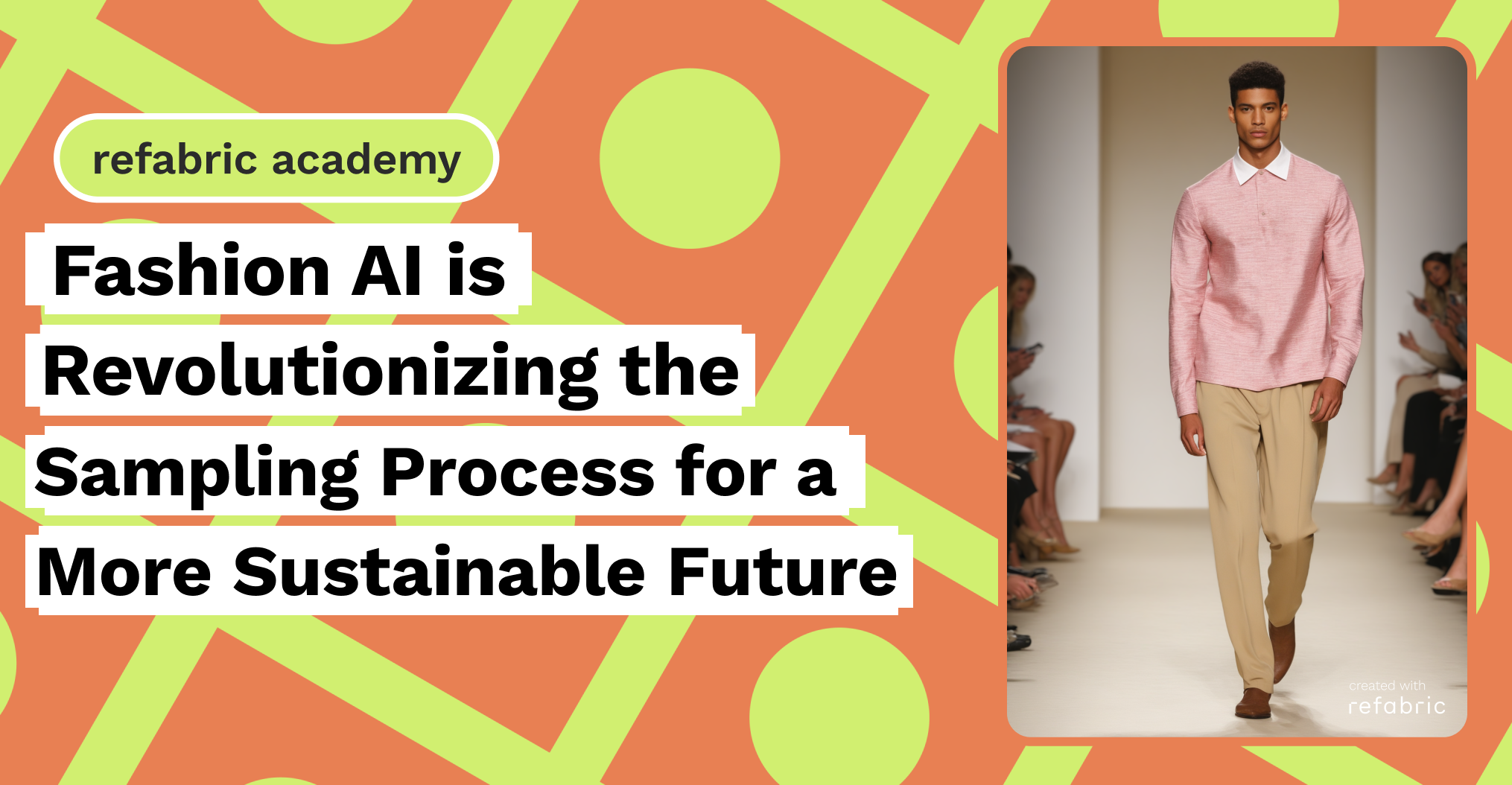Fashion AI is transforming the sampling process, a key part of the fashion industry, by making it more sustainable. Traditionally, creating physical samples of garments has been a resource-intensive process, involving materials, labor, transportation, and waste. However, advances in fashion AI technology are now offering a more efficient and eco-friendly alternative. Through digital sampling and AI-driven design tools, fashion brands can reduce waste, save time, and lower their environmental impact, all while maintaining high standards of creativity and quality.
The Traditional Sampling Process and Its Environmental Impact
In the fashion industry, sampling is a critical step where designers produce prototypes or initial versions of garments to test designs, evaluate fit, and make adjustments before the final product goes into mass production. However, this process comes with significant environmental and financial costs. Physical samples are often made from materials that may not be used in the final production, resulting in excess fabric waste. Furthermore, the creation of multiple rounds of samples to perfect designs leads to an increase in carbon emissions, especially when they are shipped between manufacturers, designers, and retailers. In many cases, samples that are no longer needed are discarded, contributing further to textile waste.
How Fashion AI Is Reducing Waste
Fashion AI is reshaping this process by allowing designers to create digital samples, also known as virtual prototypes. These digital tools enable designers to visualize their garments in 3D without the need for physical production. Designers can adjust the color, texture, fit, and movement of the garment using AI-powered software, testing how it will look and behave in various scenarios. By doing this digitally, designers avoid the need for multiple physical prototypes, reducing the use of materials and energy.
Virtual sampling can also significantly cut down on the number of physical samples that need to be made and transported, leading to a drastic reduction in carbon emissions. In fact, brands can finalize designs entirely digitally before ever producing a physical sample, only creating one when the design is ready for production. This shift not only conserves resources but also allows for more creative experimentation without the guilt of generating waste.
Speeding Up the Design Process
Beyond sustainability, fashion AI also accelerates the design process. Digital sampling tools enable designers to iterate faster, trying out new designs and modifications in real-time. Instead of waiting weeks for physical samples to be made and shipped, digital prototypes can be created and adjusted in minutes or hours. This speed allows brands to respond to trends more quickly, reducing the risk of producing items that are no longer in demand by the time they reach stores.
This efficiency is particularly beneficial in today’s fast-paced fashion industry, where consumer demands change rapidly. Fashion AI tools help designers test multiple versions of a garment in a fraction of the time it would take traditionally, leading to more agile production timelines. As a result, brands can avoid overproduction, another significant contributor to waste in fashion.
Enhancing Accuracy and Reducing Errors
One of the major advantages of fashion AI in the sampling process is its ability to enhance accuracy. AI-driven tools are capable of predicting how fabrics will behave based on their properties, helping designers make more informed decisions about drape, fit, and durability. This reduces the need for multiple revisions and eliminates guesswork in the design process.
Fashion AI’s ability to simulate real-world conditions also means that designers can create garments that are more suited to the end consumer, leading to fewer returns and unsold inventory—two major sources of waste in the fashion industry. By creating a more accurate representation of the final product, fashion AI helps designers get it right the first time, reducing the need for excessive sampling and production.
Fashion AI Tools Transforming Sampling: Refabric’s Fabric Implementation
Cutting-edge generative AI-powered software systems like Refabric are poised to revolutionize the fashion industry’s sampling process. One of the most crucial tools in Refabric’s arsenal is its fabric implementation feature. This advanced fashion AI tool allows designers to seamlessly integrate and visualize various fabrics in their digital prototypes. By simulating how different materials will look and behave in real-world conditions, fabric implementation helps designers make more informed decisions about texture, drape, and performance before any physical samples are produced.
This technology not only enhances accuracy and reduces the need for multiple physical samples but also supports a more sustainable approach to design. With the ability to test and iterate virtually, brands can avoid unnecessary fabric waste and streamline their design workflow. Refabric’s fabric implementation tool represents a significant leap forward in digital sampling, offering a powerful solution for brands looking to innovate and reduce their environmental footprint while maintaining high standards of creativity and quality.
To sum up, fashion AI is revolutionizing the sampling process by making it more efficient, accurate, and sustainable. Through digital sampling and AI-driven design tools, the industry can significantly reduce waste, save time, and lower its environmental impact. By enabling designers to experiment freely without generating physical waste, fashion AI supports the creation of more sustainable collections while helping brands meet the demands of a fast-moving, eco-conscious market. As technology continues to evolve, the role of AI in making fashion more sustainable will only grow, paving the way for a more responsible and innovative future.
